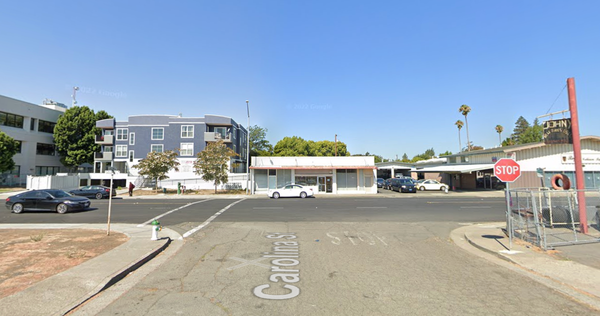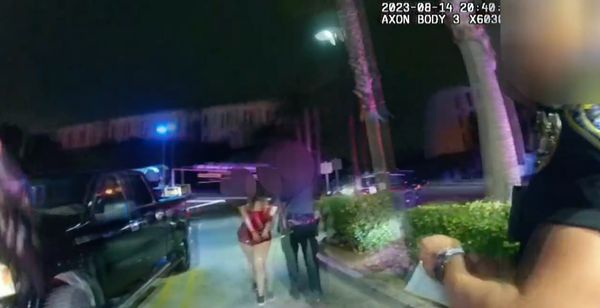
Israel bombed an apartment block in southern Gaza early on Saturday, killing 26 people, soon after announcing plans to intensify operations in areas where the Israeli military had told civilians to flee for their safety.
In the north, a column of medics, patients and refugees trudged out of al-Shifa hospital, the biggest in Gaza, where Israeli troops spent a fourth day searching for evidence of a Hamas command node it claimed was buried below the wards.
Five doctors stayed behind, a skeleton staff to care for 120 patients too weak or ill to move. Hamas authorities claimed Israel’s military ordered everyone to leave the hospital. A spokesperson for the Israel Defence Forces (IDF) said they facilitated an evacuation requested by medical staff.
Those walking south under the tense gaze of Israeli troops, through a hellscape of tangled rubble that had been buildings two months ago, along roads shattered by weapons and churned to mud by tanks, had little hope of rest when they reached the south.
Shelters are crammed, food and water supplies are so low the UN has warned Gazans face the “immediate possibility” of starvation, infectious diseases are spreading, and the war there is expected to intensify in coming days.
When Israeli planes hit northern Gaza at the start of the war, and troops prepared to move in on foot, Israeli messages urged civilians to move south of the Wadi Gaza wetlands for their own safety.
Despite risks on the journey, and severe overcrowding in shelters and private homes, hundreds of thousands followed those orders. About 1.6 million people are displaced, more than two-thirds of Gaza’s population, the UN said.
They found only relative safety there. Forty days into the war, 3,676 people had been killed in southern areas that Israel had declared safer. They accounted for a third of all Palestinian deaths in the conflict, according to a UN map using figures from Gazan health authorities.
Now many of those people have been told to move again, and cram into an even smaller area along the coast, around the town of Mawasi.
“They asked us, the citizens of Gaza, to go to the south. We went to the south. Now they are asking us to leave. Where do we go?” Atya Abu Jab told Reuters, outside the tent where his family who fled Gaza City now live, one of a long row of makeshift homes.
On Saturday morning, bombs hit a multi-storey block in Hamad City, a middle-class housing development in Khan Younis, killing 26 people and injuring 23 more. A few miles north, six Palestinians were killed in an attack on a house in Deir Al-Balah town.

Eyad Al-Zaeem lost his aunt, her children and her grandchildren, who he said had evacuated from north Gaza on Israeli army orders. “All of them were martyred. They had nothing to do with the (Hamas) resistance,” Zaeem said, standing outside the morgue at Nasser hospital.
Israel’s chief military spokesperson, Rear Adm Daniel Hagari, said on Friday that the country’s troops would attack “wherever Hamas exists, including in the south of the strip”. He told journalists: “We are determined to advance our operation”.
This week Netanyahu admitted in an interview that the war was taking a heavy toll on civilians in Gaza, but blamed Hamas for the deaths. “That’s what we’re trying to do: minimal civilian casualties. But unfortunately, we’re not successful,” he told CBS.
It is not clear where civilians might go to escape fighting if it intensifies in the south. Gaza was already densely populated before the current fighting began on 7 October, triggered by Hamas attacks on Israel that killed 1,200 people, most of them civilians.
The enclave of 365 sq km was home to 2.3 million people. Now the north has largely emptied, most of those people are in the south, in private homes or overcrowded UN shelters.
Aid agencies have said they are already unable to provide food, water and medical care to people there, because of shortages of fuel, communications problems and blocks on letting humanitarian supplies pass into Gaza.
Those problems would be exacerbated if civilians were told to retreat into a smaller area, pushing up the indirect toll of the war. Security officials inside Israel have also been open that they expect civilian deaths, already at unprecedented levels, to rise higher as fighting shifts into more crowded areas.
“There will probably be more civilian casualties,” Giora Eiland, a former head of Israel’s national security council, told Reuters. “It is not going to deter us or prevent us from moving forward.”
On Friday, the toll from Hamas-run health authorities was updated to more than 12,000 dead, including 5,000 children. The UN deems those figures credible, based on verification processes in past conflicts in Gaza.
Some inside Gaza and across the region fear Israel aims to push Palestinians out of their devastated enclave entirely, seeking a new Nakba, the Arabic term for the forcible expulsion of about 750,000 Palestinians from what was previously British mandate-controlled Palestine during the creation of Israel in 1948.
A week ago Avi Dichter, a member of the Israeli security cabinet member and agriculture minister, said in a television interview: “We are now rolling out the Gaza Nakba.” Netanyahu warned cabinet ministers the next day to choose their words carefully.
Jordan’s foreign minister, Ayman Safadi, was among regional leaders who said at a security summit in Bahrain that Israel should not try to push Gazans out of the territory, saying Jordan would do “whatever it takes to stop” the displacement of Palestinians.

“We will never allow that to happen; in addition to it being a war crime, it would be a direct threat to our national security.”
Violence continued to surge across the occupied West Bank.
An Israeli airstrike at 2am on Saturday killed five and wounded two other people at an office of the Palestinian president Mahmoud Abbas’s Fatah party in Nablus. In a statement, the IDF said it had struck “a hideout used by terrorists involved in planning imminent terror attacks against Israeli civilians and military targets”.
The strike was carried out by one of its aircraft, it added, without specifying the type. The use of a warplane marked an escalation of Israeli tactics.
Al-Aqsa Martyrs Brigade, an armed faction affiliated with Fatah, claimed the five dead as its fighters and thousands attended funerals in Balata camp on Saturday morning. Amid the mourners, dozens of armed men fired in the air.
The oldest among those killed was 40; the youngest was 15. The family of the dead teenager, named as Mohammed al-Musseimi, said he had been walking past the office when the airstrike took place and was not a member of any armed group.
“He was just an innocent kid, he was just passing by,” an aunt of Musseimi said.
Israeli officials said the dead included a “prominent terrorist” involved in past attacks in Israel.
“Zahed took part in the hostile terror activity in the Balata Camp and founded a terrorist cell composed of the camp’s youth, which he armed with explosives and weapons for terror activities against IDF soldiers entering the camp,” the IDF statement read. There was no independent confirmation of the claim.
Elsewhere there were clashes near Ramallah, in Jericho and in East Jerusalem.
At least 191 Palestinians have been killed in the West Bank since the 7 October Hamas attacks on Israel, and as many as 2,000 detained amid a strict clampdown. Israeli officials say the arrests have thwarted several significant attacks.
Israeli security forces also shot dead an attacker near Hebron after he opened fire on soldiers on Friday morning. On Thursday, an Israeli soldier was killed at a checkpoint on the West Bank’s route 60.
On Saturday, the ISF said it had suspended a soldier who threw a stun grenade into a mosque in the village of Budrus, north-west of Ramallah, during morning prayers.







